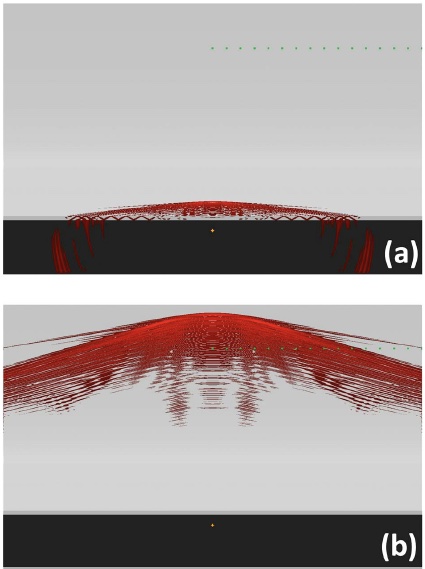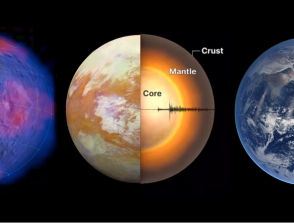3D modeling of the March 2011 Tohoku-Oki earthquake ionospheric signals based on a spectral-element method

Start: 01 January 2012
End: 30 November 2016
Supervisors :
Philippe Lognonné, Dimitri Komatitsch
Related teams :
Planetology and Space Sciences
Status: Defended
From all the ionospheric signals generated by the mega-earthquake of To-hoku, March, 11, 2011 (atmospheric and gravity waves excited from the surface rup-ture, ionospheric waves forced by the propagating Rayleigh or tsunami), the ionosphe-ric hole, which developed above the source, is the strangest and less modeled signal. This PhD aimed to model the impact in the ionosphere of the arrival of the acoustic wave, by using for the first time a 3D approach, not only for the wave propagation, but also for the geometry of the shoreline and oceanic bathymetry. The seismic source has also been modeled with an extended source model, which represent much better the emission by the propagative rupture of the acoustic waves in the atmosphere. In order to reach that goal, the numerical code SPECFEM3D Cartesian has been modi-fied, in order to introduce the gravity, the atmospheric cutoff and the interaction of the neutral wave field with the ionospheric plasma. Results show the importance of the extended source, not only for a good modeling of the amplitude of the wave, but also for the geometry of a strong wave front likely closely related to the hole genera-tion. Although the modeling lack with an exact modeling of the attenuation, which lead to overestimation of the long period acoustic pulse, we are able to reproduce the ionospheric hole and demonstrate that it is more linked to the non-linearity of the ionospheric coupling than to non-linearity of the wave equation. These results suggest that the ionospheric hole is mostly generated to the non-linearity of the ionospheric advection by the acoustic wave, and that its amplitude depend strongly on the magnitude of the earthquake.





